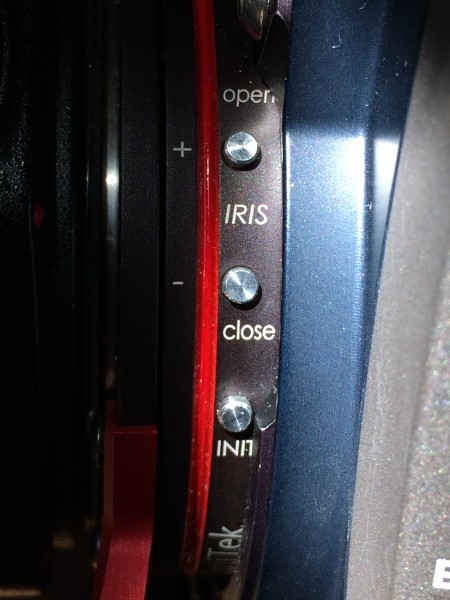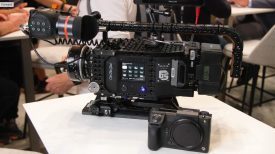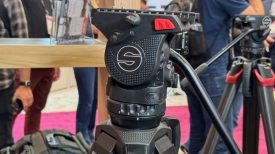By technical editor Matt Allard:
Optitek have started shipping their Canon ProLock-i and Nikon Prolock mounts for the Arri Amira and Alexa Mini. These mounts allow Arri owners to use a wide variety of non-PL lenses on their cameras. This allows for increased flexibility and enables the user to go with smaller, more compact lens set ups. On the Arri Amira it gives operators the option to keep the camera’s weight down by using lighter stills lenses – some also prefer the shorter focus throws of stills glass for run-and-gun shooting. For the Arri Alexa Mini, the ability to use lighter and more compact lenses when it is on a drone or gimbal appeals to many operators.
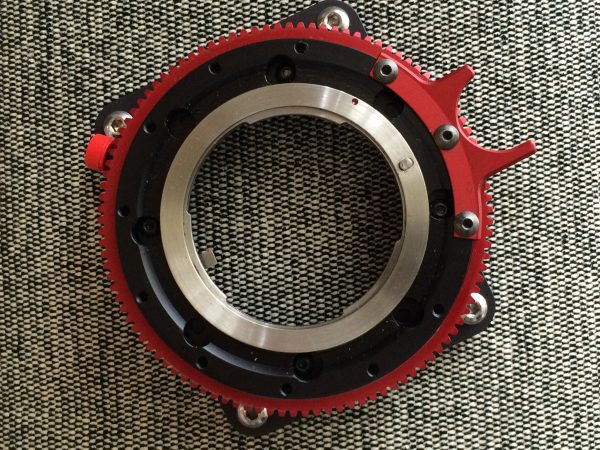
I recently had the chance to test out pre-production versions of both of these mounts on my own Amira to see how they performed with various lenses. I wanted to test usability and build quality to see if they were a genuine alternative to going with the standard PL mount.
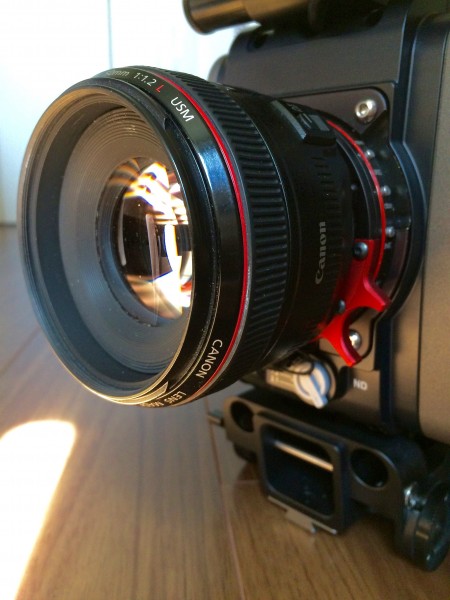
Canon ProLock-i
The Canon ProLock-i mount is very straightforward to attach to the Arri Alexa or Alexa Mini. Using an allen key you just undo four screws and remove the PL mount from the camera. You then place the Canon ProLock-i in its stead on the camera and attach it using the included screws. Just be aware that the size of the head on the screws that come with the Canon ProLock-i mount are a different size to those on the Arri PL mount, so please do not try to use the same screws from the Arri mount on the Optitek Canon mount.
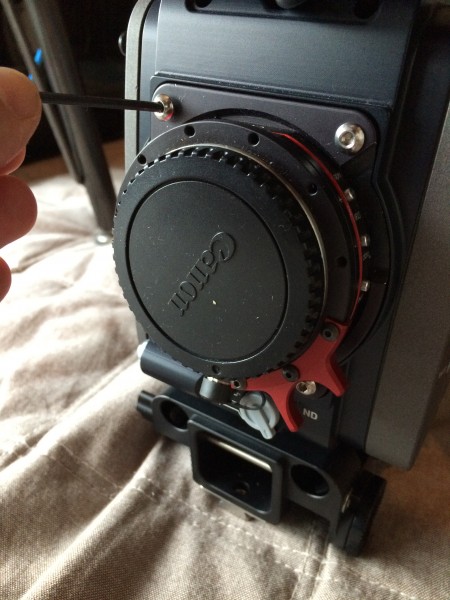
Once the Canon ProLock-i is on the camera you are all set to go. You attach the lens in the same way as you would on any Canon mount camera, but you get the added benefit of having a positive locking mechanism that behaves in much the same way as a PL mount (or Canon’s C500 EF mount). I was very impressed by this feature as it securely locks your lens to the mount and you don’t get any of that nasty lens wiggle that you often see when using cheap lens mount adaptors. The mount has electronic contacts that allow for the lens to be powered and the aperture to be adjusted. The mount draws between 1-5W of power depending on the lens you have attached. If you are using a lens with stabilisation activated then it will draw closer to 5W.
You can adjust the aperture via two buttons on the actual lens mount itself. By pressing it just once it goes up by 1 increment at a time. If you keep your finger on the button then it goes up by the same increments continually. The same applies when closing down the iris. Another button allows you to make the iris increment larger or smaller.
Optitek say the Canon version of the ProLock-i is compatible with most EF mounted lenses from Canon, Tamron and Sigma. I tested out some of the Canon lenses I own, including the 16-35mm f2.8, 100mm macro f2.8, 50mm f1.2, 135mm f2 and 35-350mm f3.5- f5.6. I contacted Optitek to see if Canon EF mount Tokina and Zeiss lenses will also work with the adapter and they told me that they should. Below you can see a test showing the iris control function of the Canon ProLock-i mount.
As you can see from my tests, the Canon ProLock-i allows you to have complete control over the aperture functions of Canon EF mount lenses. The iris response is never going to be super smooth due to a limitation of the actual lens itself. I can confirm that if you’re using a Canon lens with built-in image stabilisation then the function works really well. The only downside of the Optitek Canon ProLock-i mount is that it will not display a f-stop reading in the viewfinder, whereas Arri’s own version of the Canon EF mount will.
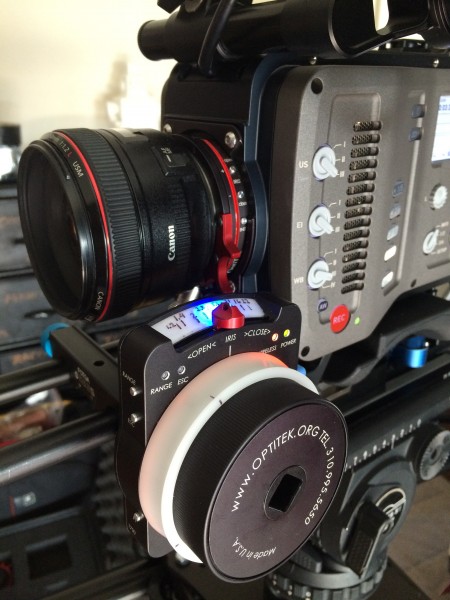
If you want to add iris control that isn’t limited to being on the mount itself then you need to purchase the optional OptiTron 2. This also acts as a remote follow focus controller and is the company’s second generation of EFF (electronic follow focus). Optitek claim: “This is the first (technically the second gen) professional device that connects with auto focus motors built into DSLR lenses and, instead of a gear /Follow Focus (external motor) combination seamlessly integrates with the lens and the camera system for accurate, repeatable, smooth and responsive lens control of focus and aperture.”
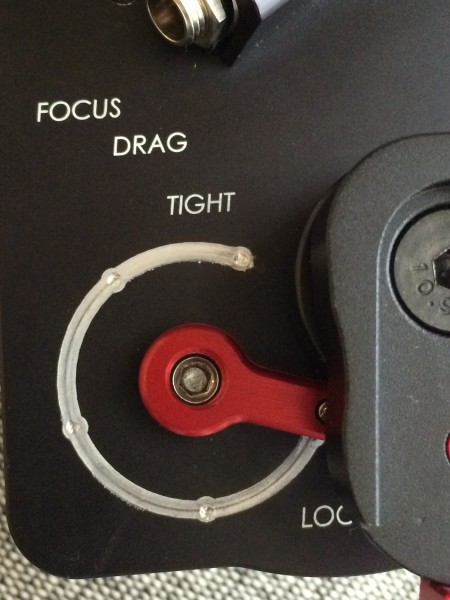
I found that the OptiTron 2 is very easy to set up and use. It draws power via a small connector that is located on the actual Canon ProLock-i. Another nice feature is that it allows for remapping of the very limited focus rotation on AF lenses to a nearly full rotation (320 degrees) of the focus knob. There is also a rotation direction switch for left and right side mounting of the controller, and you can remap the custom user defined focus range, that allows for full rotation of the knob if you need more precise control for macro critical focus work. An adjustable iris scale and backlit aperture and focus control are nice touches that allow you to use it at night time or in dark environments. The actual iris slider has a marking strip for felt pen, making it adjustable so the scale once marked can be reused for different lenses. Another nice feature I liked was the focus drag lever that is located under the battery cage. It lets you adjust the tension on the focus knob depending on your needs.
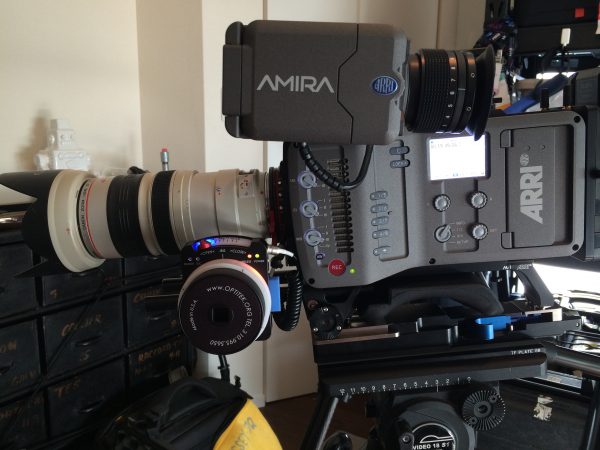
Below are some examples of how the EFF (electronic follow focus) worked on various Canon lenses. As you can see from my tests, not all lenses behaved in the same way. The follow focus certainly allows for a longer focus throw than if you were focusing using your hands on the actual lens. I still found that it did behave in a very electronic sort of way and lacked that nice smooth effect you get from doing it manually. Again, this is down to the adaptor having to use the electronics of the actual lens to move the focus. I found it worked well on most of the lenses I tried but it did have a lot of trouble on the Canon 35-350mm f3.5-F5.6. To be fair this is an older lens and not a lot of people own one, but the EFF would completely make the lens freak out when focussing towards infinity. Bear in mind that you aren’t limited to just controlling the focus on the actual OptiTron 2 controller. You can still manually adjust the focus on the lens by hand as well.
The nice thing about the OptiTron 2 is that it isn’t just limited to being used on the Arri Amira or Alexa Mini. It can also be used with the company’s Sony F5/55 Canon mount and RED Canon EF mount.
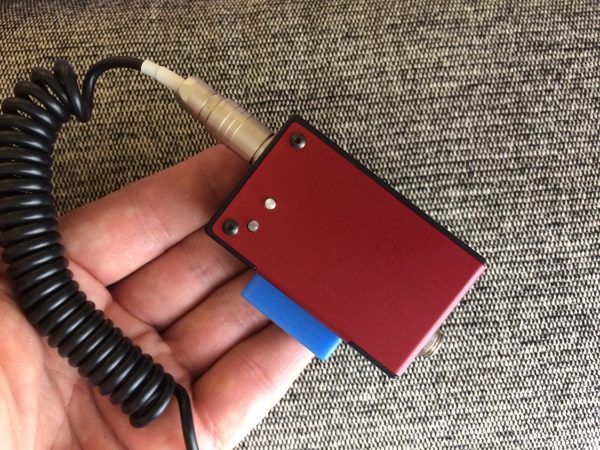
If you want to get even more advanced you can turn the whole package into a wireless EFF (electronic follow focus) and iris controller by adding the OptiTron 2 wireless kit . All you need to do is attach the wireless receiver unit to the connector port on the Canon Prolock-i adaptor and you’re all set to go. On the OptiTron 2 controller unit you then need to attach the supplied rechargeable battery back to power it up. This allows you to have the exact same control as you had when the OptiTron 2 was attached to the mount, but wirelessly. This is perfect for those who want to run Canon EF glass on an Arri Alexa Mini and have the lens controlled remotely when using it on drones, cranes, Steadicams and gimbals. I found from my testing that the response time was very fast and the range was also quite impressive. The company claims a wireless range of up to 100m which is on a par with a lot of other wireless focus systems. In my testing I found that the unit worked well even if you were in a different room or behind walls.
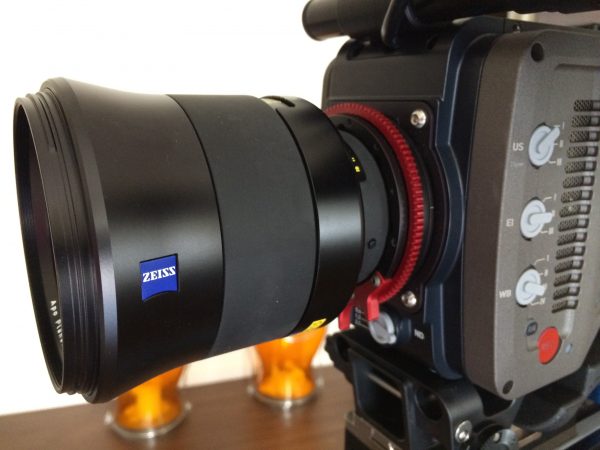
Nikon ProLock
I was excited to try out the Nikon mount as I own a lot of Nikon mount lenses and personally prefer them to Canon glass. The Nikon mount has an aperture control for G type lenses built into the adapter, as well as an iris scale that is engraved on the control ring to read the lens aperture value. The iris scale is also adjustable so it can be precisely calibrated to the lens you’re using on the camera. Another nice touch is that the iris ring features a standard 0.8 mod pitch gear so a motor can be used to control aperture remotely if need be.
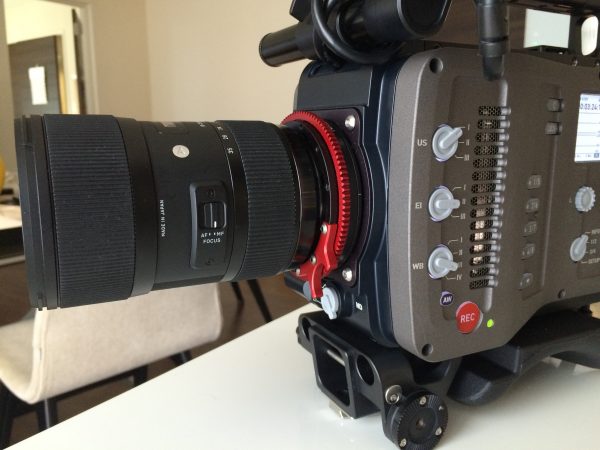
I tested out the Nikon mount with various Nikon mount lenses including the Zeiss Otus 85mm f1.4 and 55mm f1.4, Zeiss 21mm f2.8, Nikon 80-200mm f2.8 and the Sigma 18-35mm f1.8. I was primarily interested in seeing how well the iris control worked to see if it allowed for smooth changes in the aperture. I was very impressed with how smooth you could make the aperture changes and it felt almost as good as using a properly de-clicked aperture. For it to work with lenses that already have a manual iris control on them, you need to set that value to closed. The only drawback is having to get used to placing your fingers all the way back on the mount to control the aperture. Below you can see my tests using the Nikon mount.
The one peculiar problem that I came across when testing the Optitek Canon ProLock-i and Nikon ProLock mounts was when you engaged the internal ND filters on the camera for the first time after attaching a lens. The electronically controlled ND filter would move backwards and forwards for around 10 seconds until it became stable and stopped in place. This only seems to happen the first time you attach a lens and power it on. I am assuming that the camera is looking for the normal Arri electronic connection information that is found on the PL mount. You can see for yourself below. Optitek have told me that they have not seen this problem before when they were testing the mounts with Arri cameras.
I was very impressed with the build quality and rugged design of both the Canon and Nikon mounts. They both fit as if they had come out of the Arri factory and the positive locking mechanism means your lens won’t wobble around. Another benefit of this mount is that you can use heavier lenses without having to resort to using a lens support. If you are going to mount something heavier than a 70-200mm f2.8 lens then use common sense and don’t rely on the mount to support all the weight. I found from testing both mounts that I didn’t run into any back focus issues and all the lenses I tried easily focussed to infinity.
After a couple of straight weeks using the Nikon Prolock mount on a documentary shoot where I was constantly changing lenses, I did find that on occasion that the aperture ring adjustment on the mount would cause the lens iris to close and I could not open it back up. This seemed to happen a lot when using the Sigma 18-35mm f1.8 lens. The only way to solve this was to take the lens off and put it back on which was very annoying to say the least. The mount I was using was a pre-production version, so hopefully this has now been fixed.
The Optitek Canon ProLock-i and Nikon ProLock mounts are a nice solution for users who want to use Nikon or Canon mount lenses on their Amira or Alexa Mini. I particularly like the simplicity of the Nikon mount, but I know a lot more users will probably prefer the Canon mount. Using Canon lenses is not without its problems though. Because of the design of Canon EF stills lenses, it is impossible to get smooth aperture control. The Canon ProLock-i does pretty well given the limitations of the lens it is connected to. Arri do make their own Canon EF adaptor but the only way to change iris using it is via the menu scroll wheel on the EVF. The Arri Canon EF mount retails for around $1500 US, while the Optitek Canon ProLock-i is slightly more expensive at $1795 US. If you want the added versatility of using the OptiTron 2 controller, that will set you back an additional $1995 US. The wireless kit for the OptiTron 2 is $795 US. For the Canon Prolock-i mount, OptiTron 2 controller and wireless kit you are looking at a grand total of $4589 US. The Nikon ProLock mount retails for $995 US and presently the only other Nikon mount adaptor available for the Amira and Alexa Mini is made by P+S Technik for 700 Euros (ex VAT), but it is a mechanical mount only and does not offer any sort of aperture control.
For more information about the Arri Amira and Alexa Mini mounts, as well as the company’s wide selection of other products, head over to Optitek.

